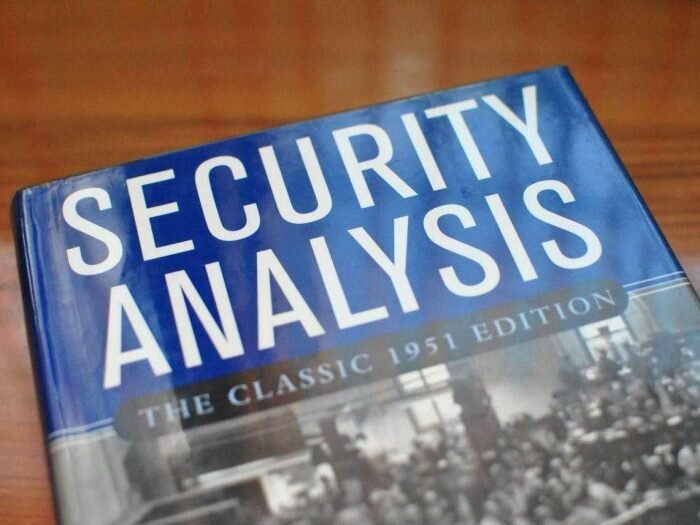Contents

Also consider that the breakout may have started later in the day. Be aware that the handle itself, which must stretch for a minimum five trading sessions, can morph into a base of its own in certain cases. That’s not a problem; it’s often a stock’s way of offering a buy point that’s clearer or lower than that suggested by the larger pattern.

The cup and handle chart pattern marks a consolidation period in a stock followed by a breakout and suggests a continuation of the uptrend in a security’s price movement. The Cup and Handle pattern is a bullish continuation or reversal price formation, often used to identify buying opportunities. To determine the cup and handle, follow price movements on a chart and look for the “u” shape and the downward handle. Some rules will help you find a valid Cup and Handle pattern relating to its length, depth, and the underlying asset’s liquidity. An inverted “cup and handle” is used to identify selling opportunities, which is a sign of an upcoming bearish movement.
Can a cup and handle pattern fail?
A cup and handle pattern failure, also known as a “failed cup and handle pattern”, is when a cup and handle pattern has formed, prices rise and move a little higher above the resistance level of the pattern. However, it fails to continue increasing in price and instead reverses and trends downward.
The cup and handle pattern is a formation on the price chart of an asset that resembles a cup with a handle. As its name implies, the pattern consists of two parts — the cup and the handle. Further down in the article we have several charts to show how it looks like in a chart. Yes, the cup and handle pattern is considered a bullish continuation pattern. Strong andhigh-performing growth stocksgenerally form cup and handle patterns during their bull runs.
Some patterns emerge during day trading, forming over the course of hours, while others can take shape over the better part of a year. Often the asset’s price will remain at its low point for weeks or even months before recovering its value. Stop buy orders can be used to automatically trade a breakout above the handle’s upper trendline or above the level of the right side of the cup. A cup and handle pattern is formed when there is a price rise followed by a fall. The price rallies back to the point where the fall started, which creates a “U” or cup shape.
The chart pattern is categorized as a bullish reversal pattern. A breakout is when the price moves above a resistance level or moves below a support level. The price movement of a breakout can be described as a sudden, directional move in price that is… As the cup is completed, the price trades sideways, and a trading range is established on the right-hand side and the handle is formed. The cup part of the pattern should be fairly shallow, with a rounded or flat “bottom” (not a V-shaped one), and ideally reach to the same price at the upper end of both sides.
At this point, an investor may purchase the stock, anticipating that it will bounce back to previous levels. The stock then rebounds, testing the previous high resistance levels, after which it falls into a sideways trend. In the final leg of the pattern, the stock exceeds these resistance levels, soaring 50% above the previous high. Thanks man , one of the best articles on trading the cupnhandle pattern. If you guys wanna see some cups getting completed right now, go open the bitcoin ethereum and xrp charts. No one can explain how to trade cup and handle pattern better that way you have explained in this short article.
Drawbacks of the Cup and Handle
There is a risk of missing the trade if the price continues to advance and does not pull back. In my opinion, the cup and handle pattern can be both a continuation pattern and a reversal pattern. Finally, when the price breaks out of Resistance, the cup and handle pattern is “confirmed”, and the market could move higher.
Is cup and handle pattern reliable?
Yes, the cup and handle pattern is considered a bullish continuation pattern. Strong and high-performing growth stocks generally form cup and handle patterns during their bull runs. The forming of this pattern allows the stock to base or take a “breather” before its next move up and is seen as healthy action.
At that point, it makes sense to exit the stock, even if the 7%-8% loss-cutting sell rule has not yet been triggered. The handle should form in the upper part of the entire pattern. Greed, fear, hope, despair and other emotions drive stock prices. The Balance uses only high-quality sources, including peer-reviewed studies, to support the facts within our articles. Read our editorial process to learn more about how we fact-check and keep our content accurate, reliable, and trustworthy.
Cup and handle patterns in forex
Cup and handle patterns are found on all timeframes, from intraday charts up to weekly and monthly charts. The image above displays the standard cup and handle pattern. To trade this formation correctly, a trader should place a stop buy order slightly above the upper trendline that makes up the handle. This way, the buy order will only execute if the price breaks above the upper resistance level.
What is a 6 handle?
A handle is the whole number part of a price quote, that is, the portion of the quote to the left of the decimal point. For example, if the price quote for the stock is $56.25, the handle is $56, eliminating the value of cents in the quote.
Thomas Bulkowski’s backtests are also lacking strict buy and sell rules, and he argues the cup and handle strategy is inferior to many other patterns. It forms after a price rally, and its depth should be 30-50% of the rally preceding it. The shallower and more rounded the cup, the better the pattern. When you identify a cup and handle pattern on smaller time frames e.g. 15-minute, zoom out to see the larger trend in higher time frames e.g. daily. The Cup and Handle pattern is where the price initially declines, then levels off and begins to rise again, thus resembling a cup with a handle. The objective of the cup with handle pattern is calculated by plotting the height of the cup on the handle’s breaking point.
The good thing with a buy stop order is your entry will just be above the highs of the “handle”, and if the breakout is real, that’s one of the best prices to get in. Finally, just like in many technical patterns, the Cup and Handle pattern can be unreliable in illiquid markets. To get the best out of the pattern, you may have to combine it with other technical analysis tools. Plenty of investors choose to follow the cup and handle stock rules of O’Neil strictly, but there are a variety of additional investment strategies like that as well. Another breakout occurs and brings the stock price to a new high that sets it at the previous high plus the depth of the cup.
Chart Patterns
When the https://business-oppurtunities.com/ breaks out of the handle, the pattern is considered complete, and the price is expected to rise. The Cup with Handle is a bullish continuation pattern that marks a consolidation period followed by a breakout. It was developed by William O’Neil and introduced in his 1988 book, How to Make Money in Stocks. A cup and handle is considered a bullish signal extending an uptrend, and it is used to spot opportunities to go long. However, sometimes, the market closes much higher and you get a poor cup and handle pattern target entry point. This results in a wide stop loss and a smaller position size on your trade.
- It is also known as the bullish cup and handle pattern, signaling a potential uptrend in prices.
- This means the inverted cup and handle is the opposite of the regular cup and handle.
- In any case, the handle should retrace less than 1/3 to 1/2 the depth of the cup – the shallower the retracement, the more bullish the movement following a breakout should be.
- Like all technical indicators, the cup and handle should be used in concert with other signals and indicators before making a trading decision.
- Plenty of investors choose to follow the cup and handle stock rules of O’Neil strictly, but there are a variety of additional investment strategies like that as well.
There should be a substantial increase in volume on the breakout above the handle’s resistance. Alternatively, you place a stop buy order slightly above that upper trend line. Sometimes, it is prudent to wait for a breakout above the resistance line established by the highs of the cup. The Cup and Handle pattern and the inverse type are potent trend continuation signals. When you see any of them, you have to trade in the direction of the trend. While you can trade these price action chart patterns on their own, it may be wise to confirm the trend with some tools, like trend lines and moving averages.
Learn to trade
By November, it has formed a handle and eventually broke above the handle. First, we want to write that the cup and handle pattern is also called cup WITH handle pattern. In this article, we backtest the cup and handle pattern strategy. Because the cup and handle pattern is difficult to define with strict buy and sell rules, we refer to other research. The high points of the cup and the handle are aligned on the same horizontal resistance line.
When the corporate career development networking witnesses multiple swings in price, the stop-loss is placed at the bottom of the most recent swing. The exit point in the trade is estimated based on the target. A general estimate of a cup and handle pattern target is the height of the cup and the height of the handle’s breakout point. However, depending on the price movement, the target may shift. Identifying the cup and handle chart pattern can be complicated, even if you know what you are looking for.

A double bottom pattern is a technical analysis charting pattern that characterizes a major change in a market trend, from down to up. Technical traders using this indicator should place a stop buy order slightly above the upper trendline of the handle part of the pattern. The idea behind the Cup and Handle pattern is to trade the breakout when the price breaks above the “handle”. The best cup and handle patterns have a shallow retracement on the handle (not more than 1/3 of the cup). Now, A cup and handle invalidation would be if you see a large sell-off from Resistance, as it tells you the market is not ready to head higher.
Cup and Handle Trading Tips
A doji is a trading session where a security’s open and close prices are virtually equal. To form the handle, the price must approach Resistance and form a tight consolidation . Investment services and the Brokerage Accounts for treasury securities are offered by Jiko Securities, Inc. (“JSI”). Explanatory brochure available upon request or at Past performance is not indicative of future performance.

It focuses on how the company is doing financially and operationally and can complement the insights of technical analysis. The pattern is partially defined by this final return to growth. If the cup is followed by long-term stability in the asset’s price, then this is considered a revaluation or momentary dip rather than a trading pattern. The cup-and-handle is defined by the short-term dip in an otherwise long-term pattern of growth.

Although it’s one of the more popular chart patterns, it also has limitations. A cup and handle pattern is considered a bullish signal extending an uptrend in the stock market and is used to discover the opportunities to go long. It’s considered a bullish signal, indicating prices are rising, which offers opportunities to go long . The cup and handle formation time frames are approximately seven weeks to a year. The stop-loss ideally should be on the upper-third end of the cup and placed at the lowest point of the handle.
An indication of interest to purchase securities involves no obligation or commitment of any kind. When a pullback occurs, it forms a rounded bottom that is no deeper than 50% of the retracing showing the pattern of the cup. Depending on the depth of the cup, with a shallow cup being a signal, if it’s too deep, it may represent a false or ambiguous signal, making decision-making difficult.




















